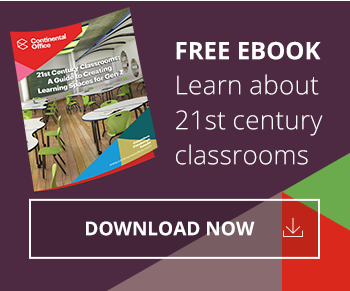They say children are our future.
And for some communities in Central Ohio, that future is one that will see significant increased growth and enrollment in their school systems. This is also a future that will test the limits of their existing school facilities and bring to light some of the challenges they can expect to encounter in the years ahead. Buildings that have been maintained throughout the years on a shoestring budget will now have the added challenge of maintaining those same buildings on that same shoestring budget, all while trying to make accommodations for an ever increasing number of students.
I won't bore you with a bunch of statistics about how Central Ohio is growing at an unprecedented rate; you already know that. You see it in the development happening in downtown Columbus, the myriad of new suburban developments popping up outside the 270 loop, and in the traffic you fight each day during your morning commute. Growth is real and it is happening now. Ignoring it won't make it go away. Ignoring it will only ensure you get run over in the process.
 Growth is happening and the area that I think is going to feel the biggest impact in the next 3 to 5 years is the education market, specifically our K-12 school systems. With growth comes people, specifically those under the age of 18. They will need a place to learn, make friends, make mistakes, learn from those mistakes, and figure out how to become the best versions of themselves.
Growth is happening and the area that I think is going to feel the biggest impact in the next 3 to 5 years is the education market, specifically our K-12 school systems. With growth comes people, specifically those under the age of 18. They will need a place to learn, make friends, make mistakes, learn from those mistakes, and figure out how to become the best versions of themselves.
Those districts that realize change is coming are preparing for the growth ahead by beginning the process of examining their existing facilities and asking if they can handle the inevitable increase in students. This Facility Master Planning process is an important step in evaluating their existing school facilities and asking what can be done to improve their situation. Maybe that means they need to knock down the existing high school from the 1950's and build a new facility that better accommodates students living and learning in the 21st century. Sometimes it means that they can keep their beloved middle school but add on a wing or two. And sometimes it's as simple as re-configuring their existing space in the elementary schools to get more usable classroom space that is better suited to teaching young minds.
I’ve been fortunate to attend several Facility Master Planning sessions around Central Ohio and there are common themes I see in those districts that have been successful in implementing the process.
Be Engaging
Schedule open houses and invite community members out to hear the plan and to discuss the process. Invite them to share their thoughts, concerns, fears, etc. Do this early and do this often. You need to generate support early because just like anything else, the more momentum you are able to create in support of your efforts, the more this will translate to an easier process down the line. You need to let the community know that their input is critical to the process.
Be Proactive
Get out and meet the community in different venues and not just rely on them attending open houses to hear your message. This means scheduling coffee meetings, small group meetings, one on one meetings, etc. to have more open and direct dialogue with people. This helps to show your commitment to the process and helps engage those members of the community that might be hesitant to attend public forums.
Be Realistic
This is not an easy process. Most districts start the Facilities Master Planning process 18 months or more in advance of any ballot issue. There will be setbacks along the way and days where you feel like the world is against you. Those are the days where you need to dig in and grind it out and try to move the needle, even if it is just in the slightest. Know that not every day will be like this but you will be better for fighting through the challenges and it will make you, your team, and the district stronger because of it.
Be Accessible
Post everything online. Send out mailers. Video record every open house. Make sure your information is easily accessible to both the tech savvy and the old school communicators. The worst thing you can hear from people going to the voting booth is “I didn’t know anything about this.”
Be Transparent
You will be asking your community members to spend more money than they have in the past. Any time you start talking dollars, things can have a tendency to go off the rails quickly. If you do none of the other things I have listed above, do this: be transparent. Let the community know how much the proposed construction work will cost, even if it’s a big number. Let them know much it will cost them specifically. Do not try to hide anything from them because if you do, it will come out eventually and you can kiss any chance of the community supporting a ballot issue goodbye.
There are countless studies available now that highlight the differences in the way children learn today in comparison to how people from my generation learned in school. Or, even more so, when our parents learned in school. The challenge many Central Ohio districts are facing is that their learning environments are built around educating our youth through an early to mid-20th Century lens, let alone an early 21st Century lens. Classrooms and education centers of the future need to be flexible and accommodate changing best practices as it relates to providing education to students. I believe that the direction most districts will take will be to implement flexible classroom spaces that double as different learning environments based upon the class, area of study, or location in the building. These type of classrooms will provide a more flexible solution and allow the facility to be adaptable to future changes in education practices.
Regardless of the final implementation plan, many of the school districts around Central Ohio will be facing this same challenge in the coming years. The support they are able to gain from the school administration, the community, and the parents of the students will ultimately determine the direction the district will grow in the future. I think we can all agree that providing our children with the opportunities and environments they need to be successful in life is something we can all support.





Comments